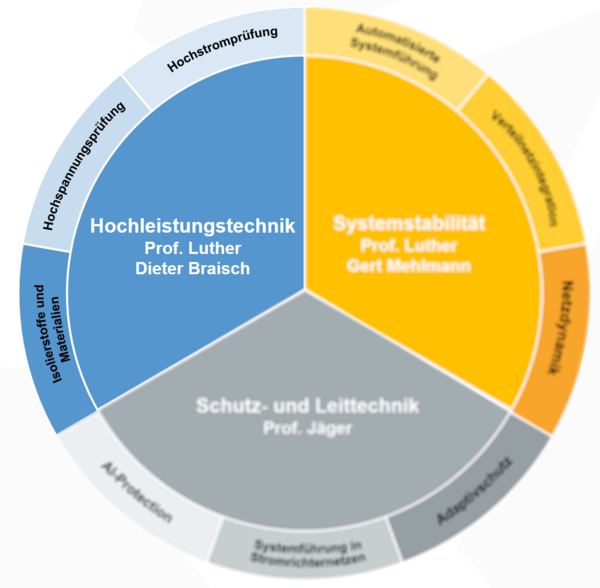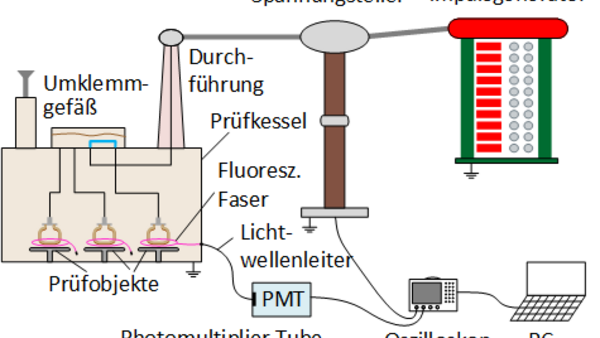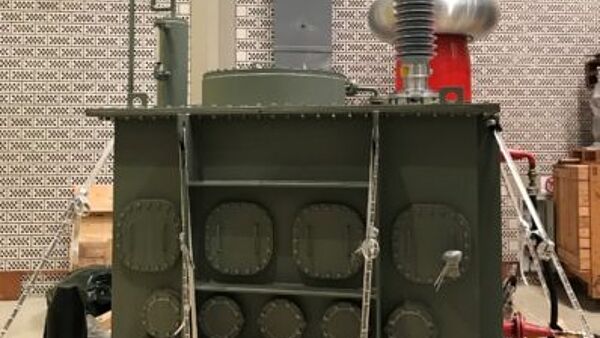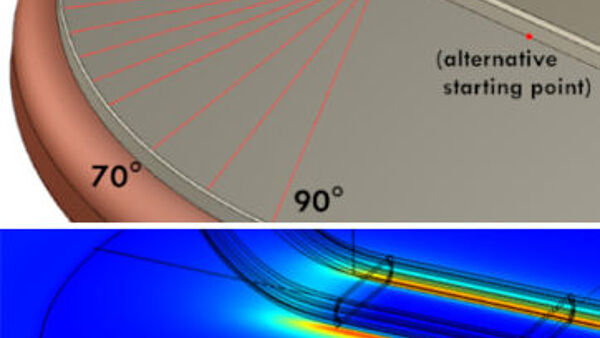High performance technology
High-voltage and high-current tests for safe grid operation
Precise knowledge and testing of the load limits of the network components is crucial for the safe operation of electrical networks. These are checked using high-voltage and high-current technology and standardized procedures.
The department of high voltage and high current technology is not only concerned with the testing of electrical components, but above all with the research of new materials and testing methods.
The chair operates its own high-voltage and high-current laboratory for such investigations.
Specialized groups of high performance technology
In the field of high-current technology, the current-carrying capacity of electrical equipment is investigated in normal operation, overload operation and short-circuit conditions. Heating, magnetic effects, current displacement, force effects, etc. play an important role here.
Components such as busbars or cables can be tested for their mechanical and thermal short-circuit resistance by means of high currents. In protection coordination, the transfer behavior of the current transformers including magnetic saturation and remanence is important for the correct functioning of the entire tripping chain.
High-voltage tests are used to examine electrical equipment. The most common test voltage forms are AC voltage, switching impulse voltage and lightning impulse voltage. Nowadays, in addition to withstand voltage testing and breakdown voltage testing, equipment diagnosis by measuring partial discharges and the dissipation factor is of increasing interest. The chair performs tests with all three voltage forms in cooperation with industrial partners. The procurement of a DC voltage system is planned.
In addition to high-voltage and high-current tests, the chair also conducts research projects on novel insulating materials. Here, not only the withstand voltage/breakdown voltage is of interest, but also the partial discharge insertion voltage. A central topic here is research into new types of insulating fluids.
For some years now, environmentally friendly insulating fluids have been increasingly used in electrical systems. These are particularly widespread in transformer construction. These new types of insulating fluids need to be further researched, since they sometimes have different electrical properties than the mineral oil-based insulating oils that have been used up to now. The chair also performs such electrical tests in cooperation with industrial partners. In contrast to pure AC voltage tests, the partial discharge onset voltage at different voltage forms is also of fundamental interest here. For this purpose, novel measuring devices and methods are also developed, such as the optical detection of partial discharges by means of photomultipliers.
The picture series below shows impressions from the research area. The test objects consist of a paper-wrapped copper rod and a counter electrode and are intended to imitate a section of a transformer winding. Figure 3 shows the optical detection of a partial discharge event at positive lightning impulse voltage. FEM simulations are also performed to evaluate the high-voltage measurements (Fig. 4).







![[Translate to Englisch:] [Translate to Englisch:]](/fileadmin/_processed_/0/e/csm_Systemstabilitaet_LEES_Luther_b43f4ec3fb.jpg)
![[Translate to Englisch:] [Translate to Englisch:]](/fileadmin/_processed_/e/2/csm_Echtzeitlabor_LEES_dbb145ed5f.jpg)